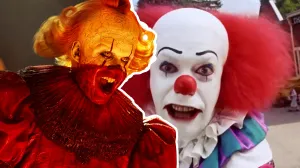
DC Comics is working to expand their readership by focusing on the young adult book market with the DC Ink imprint, and there’s no better collection of characters to use than the Teen Titans. The Titans have been a feature for children and adolescent cartoon viewers since Teen Titans premiered in 2003, a brand that was continued with the similarly addictive Teen Titans Go!, which even spawned a movie. These adaptations have a far-wider reach than any ongoing series being published today and Teen Titans: Raven offers an excellent bridge for those audiences to crossover into the comics medium. It is a self-contained original graphic novel featuring beautifully inviting artwork from Gabriel Picolo and a story from writer Kami Garcia that will appeal to fans of both the Teen Titans cartoons and general young adult audiences; it’s the first comic in the DC Ink line to fully realize the imprint’s potential.
Videos by ComicBook.com
The only notable struggle in Teen Titans: Raven seems to come from a self-awareness of this bridging potential. While the story it tells is a self-contained origin, there are a number of other characters and ideas featured that will be familiar to many people who have never read a comic before. At times this knowledge is taken for granted as multiple antagonists seem to rely on preexisting knowledge to deliver a desirable impact. It’s most prominent in how the comic negotiates the revelation of Raven’s past and powers, moving between a mysterious tone to quick (and often unregistered) bits of escalation. While this may be easily ignored by readers who are all about that Teen Titans brand, it diminishes crossover appeal in a story that has universal appeal.

That appeal doesn’t disappear with some rough transitions, though. Garcia and Picolo update the original character co-created by Marv Wolfman and George Pérez to emphasize her most human elements. Empathic abilities and a need to control her own emotions fit nicely within the story of an adolescent woman handling tragedies large and small. Whether it’s the loss of a loved one or adjusting to a new school, Raven’s primary conflicts are relatable, as are the judgments and prejudices confronting young women. The idea that emotions are a handicap and something to be smothered evolves naturally from her powers and setting, building to the strengths that make Raven a hero without being too heavy-handed. Superpowers are a secondary consideration to personal journey, and those priorities make the big, supernatural moments all the more moving.
Picolo captures the themes in this journey with the grace and intimacy they demand. He favors close panels that emphasize facial expressions and close interactions between characters. The internal conflict and relationships are the most important elements of Teen Titans: Raven and he brings them to life perfectly. Supernatural elements are woven throughout the comic and create an impact even when the very existence of magic is being questioned. When Picolo does let loose towards the story’s climax, the action blends well with the established pacing and style, even if some of the physical combat looks a bit stiff. Designs for outlandish characters and elements are excellent, and the slow application of color provides as potent of a build as any sudden escalation of violence.
Teen Titans: Raven is an almost perfect crossover comic that pairs the potential of DC Comics’ superheroes with the growing young adult sections at bookstores and libraries. While it indulges the action tropes of the genre in glorious visual fashion, it remains focused on the internal struggle of its central character and realizes her first as a unique, young woman before a caped crusader of any sort. It’s a personal tale that opens up a wider world by its final pages. Now we only have to hope that we will continue exploring that world with Raven and her fellow, forthcoming Titans.
Rating: 4 out of 5
Published by DC Ink, an imprint of DC Comics
On June 26, 2019
Written by Kami Garcia
Art by Gabriel Picolo
Cover by Gabriel Picolo
You can also read our interview with writer Kami Garcia here.








